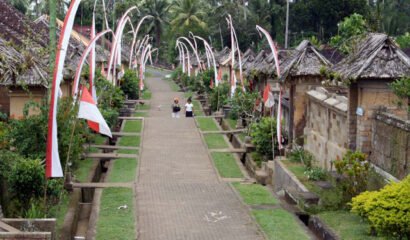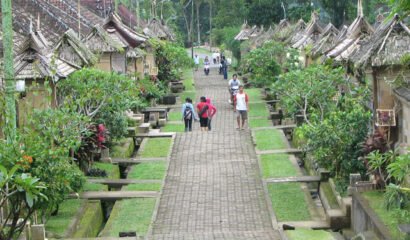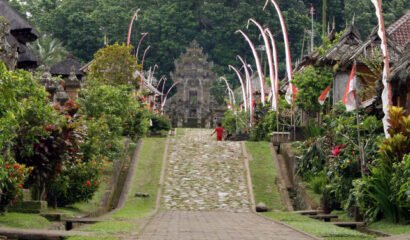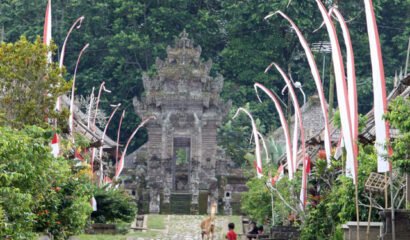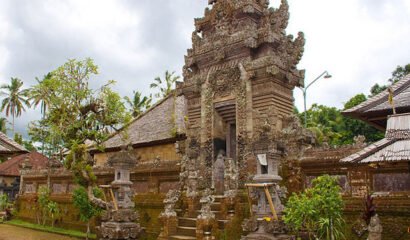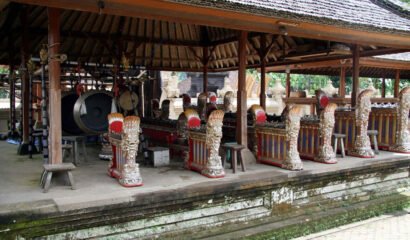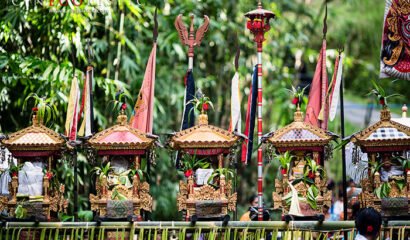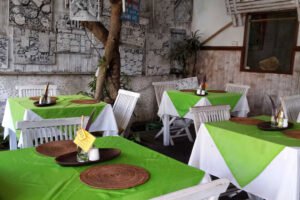Situated 45 mins from Denpasar in the Bangli region, the village of Penglipuran provides a unique insight into the culture and traditions of Bali. Set within a traditional rural landscape, the lifestyle remains authentic. Penglipuran is located at the foot of Mount Batur and benefits from the cooler mountain climate. The village precinct has been developed to showcase social and traditional values and since 1992, was designated as an Indigenous Village under local and district governance.
While the village retains its uncomplicated outward appearance and strong traditional cultural values, it is worth noting that municipal services, community assets, education, environmental values, medical programs and visitor services and facilities are regulated and well managed.
In keeping with tradition, the main road is paved with local mountain stone and provides a unique entry point to the village. The houses within the village precinct are divided into areas (east and west), and all are traditionally constructed with mud walls and bamboo roofing. The front of the house has a gate (angkul-angkul) which functions as a place of worship on holy days, and offerings will be placed here.
The villagers of Penglipuran perform regular prayers and rituals; for individual families and collectively as residents of the local community. If you visit the village during religious or ceremonial processions, you will be privileged to see unique cultural practices that remain specific to the region. The spatial layout of the village is unique and is aligned to the spatial concept in Hinduism. Village territory is divided into three parts called the tri mandala. In the north corner of the village there is a shrine (called Pura Bale Agung), in the middle of the village are the parks, communal areas and residential homes. In the south or ‘lowest part’ there is a cemetery complex (called Setra). The concept of tri mandala not only applies to the layout of the village, it is also reflected in residential homes. Each home is likewise divided into three parts; the front and entry is the gate (angkul-angkul) and an empty space (called Natah), at the centre are the family living and sleeping areas, and at the very back are the facilities, washing areas and where animals are housed.
Surrounding agricultural landscapes around Penglipuran is similar to the system of Balinese rice field terrace ‘steps’ (called Subak). The village gate or main entry is located at the highest point, flowing down the hill, with houses lining the steps downwards. Village roads will be crowded in the afternoon when people unwind after work and visit with neighbours and friends, catching up with all the news of the day.
The atmosphere around the village is peaceful; a beautiful natural landscape that is free from the noise and pollution of the major centres in Bali & across Indonesia. Residents are friendly and unpretentious – they love to welcome visitors and include them in their daily activities to showcase the traditions and customs they are working to retaining.
Penglipuran Indigenous Village is receiving many visitors now & is becoming increasingly popular. There are no hotels or tourist accommodations in the village, but there are many hotels and homestays outside the village precinct that welcome tourists and cater for additional services such as transportation, western meals and shopping outlets.


